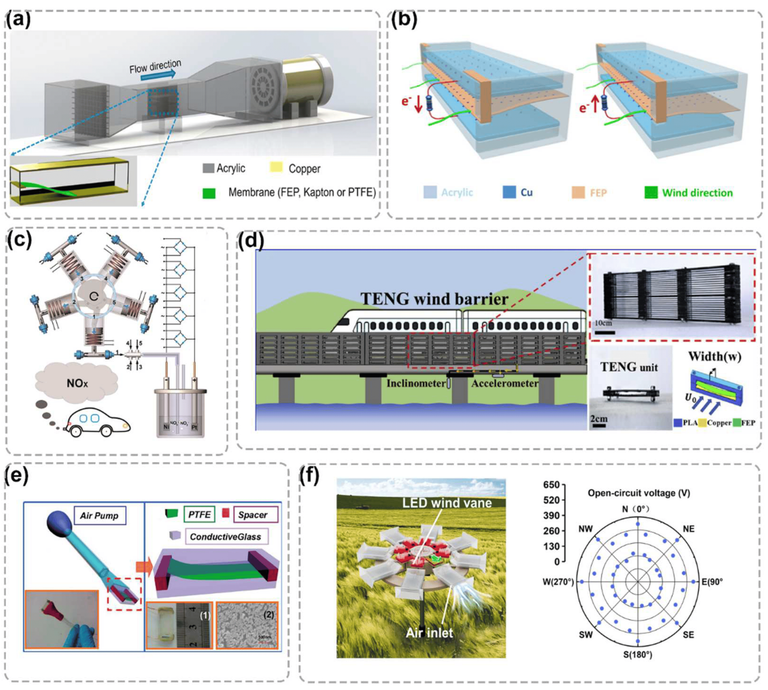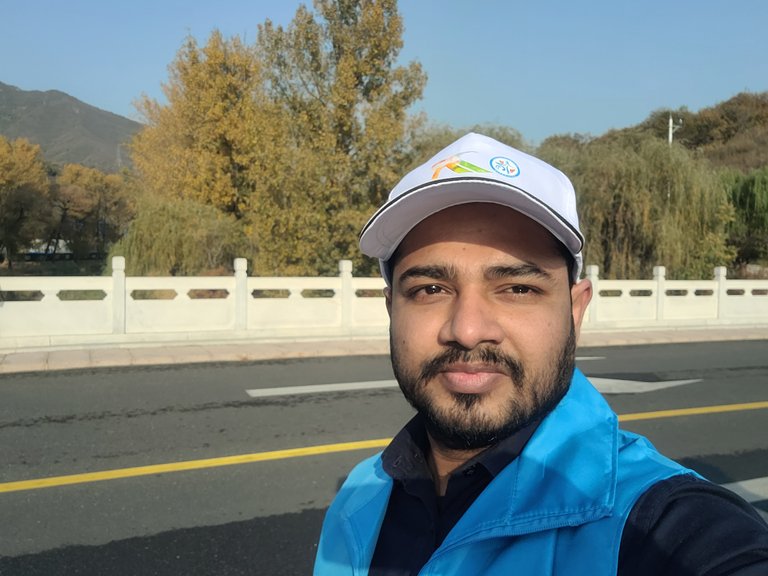
Greetings, my dear hive fellows.
In my last two posts regarding wind energy harvesting by employing wind-driven triboelectric nanogenerators (W-TENG), I have discussed a comparative scenario of the conventional wind energy harvesting wind turbines and W-TENG and the performance-affecting factors for W-TENGs. Today, I am going to share the recent updates on the application scenarios and the performances of the W-TENG for harvesting wind energy effectively.
The performances of W-TENGS largely depend on the functional materials that have been used for device fabrication, which are different types of polymers in most cases. Being a newly introduced technology, the range of the currently used materials is growing very fast, and ongoing research on new types of materials, such as leaves-based W-TENG and biomaterials-based devices, has been investigated recently. source Most polymers that are being used as the functional tribe-layers with different electrodes in the device fabrication process for the different structured W-TENGs are FEP, PTFE, PA, PVDF, Nylon, and PVC as the dielectric materials and Al, Cu, carbon, and Ag as the electrodes are the most used materials with excellent output currents and voltages.
For overall performances for most of the materials, it can be said that the both-end fixed W-TENGs are more effective in wind energy harvesting. For finding the specific materials, FEP, PTFE, and PVC polymers with Al and Cu electrodes show the best output performances. Besides materials, device performances are extended through different materials and structural variations using ionization of the air channel, carbon materials, biomaterials, and many other unique designs and mechanisms. Hybridization is another technique for improving device performance. It can be done by combining other power generation technologies with W-TENGs for better application opportunities and effective green energy harvesting.source
There some reported boosting mechanisms have been reported through different strategies such as charge excitation, the synchronizing mechanism by charge handling, using composite membranes, and so on.sources12 Through applying new boosting techniques and power management circuits, the performances can be further extended along with the development of fundamental and materials-related investigations. Besides the materials and structures perspective, another important factor to consider is the effective utilization of wind speed by these nanogenerators to generate the optimum electrical energy which has been constantly increasing. source
Wind energy harvesting by W-TENG is not so old technology but it has gained tremendous attention after the introduction of TENG in 2012. In the last 10 years, the output power has multiplied to a hundred times and the W-TENG can power up 3000 LEDs with the increasing applications area from the tiny sensors to IoTs including the data transfer wirelessly. Initially dozens of LEDs were successfully illuminated through harvesting the wind energy, in current days more than 3000 LEDs have been powered up by W-TENG which is a great achievement in wind energy harvesting. source
The applications of W-TENG are also evolving on a massive scale recently. In terms of the source of wind energy available in the surroundings, such as in nature, human movement, and mechanical residual wind energy, which determines the application area.source Natural wind energy is available through the flow of air due to temperature and pressure differences and is strongly influenced by factors such as geographical location, topography, and season.source
Therefore, the influence of these factors needs to be considered when designing wind energy TENG applications in the natural environment. Airflow is also realized through human activities, such as breathing, running, and movement of other body parts that are weak and unstable to harvest such wind energy but small portable W-TENGs, preferably flexible and wearable devices can be used for energy harvesting or preparing some useful sensors. Another massive source of green mechanical residual wind energy is the airflow caused by trains, cars, and air conditioners during their operations with high speed and due to having some operating fans.source Furthermore, there will also be some requirements for the proper operation of W-TENG such as durability, humidity resistance, and high-temperature resistance before deploying them in a specific application.
The practical application types of wind energy TENGs are divided into two categories: a power supply system and a self-powered sensor. Among them, the first category transforms wind energy into electricity as an output under the action of external wind, which is stored in the energy storage unit through the circuit management module and then provides electrical energy to electrical devices.source The power supply from W-TENGs can be effectively used as a distributed power supply in monitoring the distributed sensors in driverless buses, air purifications, self-powered motion sensors, and water/oil separation which have been already reported and more applications in this category are opening up every day. For a stable power supply, deploying capacitors paves the way for using the generated power from the W-TENGS to run smart agricultural sensors. Bluetooth for wireless data transfer has already been reported in the literature.source
Other kinds of applications are the self-powered sensor networks where the external wind acts on W-TENG, producing an output as an electrical signal to the data collection system, and through signal processing, the obtained data is in the form of sensing data such as the wind speed, wind direction, and wind level or any secondary sensing data from to indicate the analyzing result of any vibration detection, human motion detection, breathing analysis and so on.source There are also special applications such as the use of W-TENG for enhanced corrosion protection, electrochemical degradation, high voltage polarization of ferroelectric materials, air purification system, electrolysis, highway anti-glare panels, seawater electrolysis, recycling gas energy, and so on.source The development towards scaling up and integration of the W-TENGs towards intelligence, miniaturization, and precision are pushing them to real-world applications and commercialization. In addition to the extension of performance factors, fabrication cost, stability, and longevity also need to be taken into consideration to expand the application sectors in the future.
I hope you have learned something new about this evolving technology. In my next blog, I will discuss some other kinds of triboelectric nanogenerators, which will definitely amaze you and allow you to explore the excellent potential of the new technology. I hope you learn something new from this blog. If you have any queries, please let me know in the comment section.
Thanks a lot for your time and attention. I will catch up with you at the next one.
Wish you a great day!


